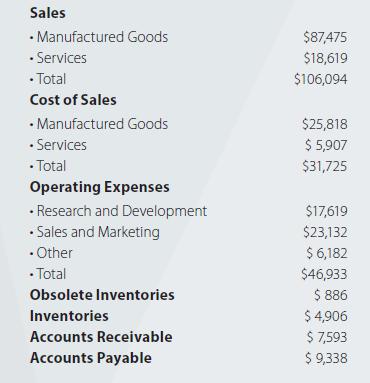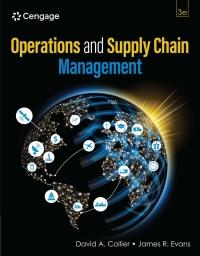Jake and Lilly Gifford founded J&L Packaging, Inc. (J&LP) in 1995 after graduating from the University of
Question:
Jake and Lilly Gifford founded J&L Packaging, Inc. (J&LP) in 1995 after graduating from the University of Cincinnati. Jake earned a degree in robotics and mechanical engineering, while Lilly graduated with a degree in computer science. They met at the university while working on an information systems course project and married immediately after graduation. Their privately held firm manufactured cardboard packaging and boxes for computer devices such as personal computers, keyboards, replacement hard drives, servers, and so on. Many of their packages were high-end boxes with glossy finishes and the company’s logo on the box. Last year, J&LP’s sales were \($106\) million. J&LP provided many services with their products, such as box and packaging design engineering and consulting, embossing and foil guidance, barcode advice, cartons that fold and collapse for easy storage, and a variety of colors and box strengths. In 2010, J&LP began to research the sustainability issues regarding boxes in the reverse logistics supply chain. Their research lead to a change in production technologies to accommodate up to 100 percent recycled fiber content and solar panels on the roofs of their two U.S. factories. They also hired an engineer to lead the company’s efforts to become a “Green Cycle”-certified manufacturer. J&LP recently purchased and installed an ISOWA FALCON state-of-the-art, four-color, high-speed flexo box machine with an extensive zero defects quality control system. This box cutting and fabrication machine is manufactured in Kasugai, Japan, by the ISOWA Corporation. J&LP’s financial information for last year follows. It is assumed the business operates 300 days per year. One note in J&LP financial statement states that the \($4,906,000\) of inventory does not include \($886,000\) in inventory allowances for excess, canceled orders, and obsolete inventories. The note goes on to say, “Inventory management remains an area of focus as we balance the need to maintain strategic inventory levels to ensure competitive lead times versus the risk of inventory obsolescence because of changing technology and customer requirements. The box and packaging business is a dynamic industry that must quickly accommodate customer requirements, changes in forecasts, and new findings from research and development on product features and options.” The following data (in thousands of dollars [\($])\) is provided for last year.

Case Questions for Discussion:
1.Should we consider services in the cash-to-cash conversion cycle computations?
2.How will you handle the \($886,000\) in obsolete inventory?
3.What is the total cash-to-cash conversion cycle for J&L Packaging, Inc. for last year?
4.What are your conclusions and final recommendations?
Step by Step Answer:

Operations And Supply Chain Management
ISBN: 9780357901649
3rd Edition
Authors: David A. Collier; James Evans





